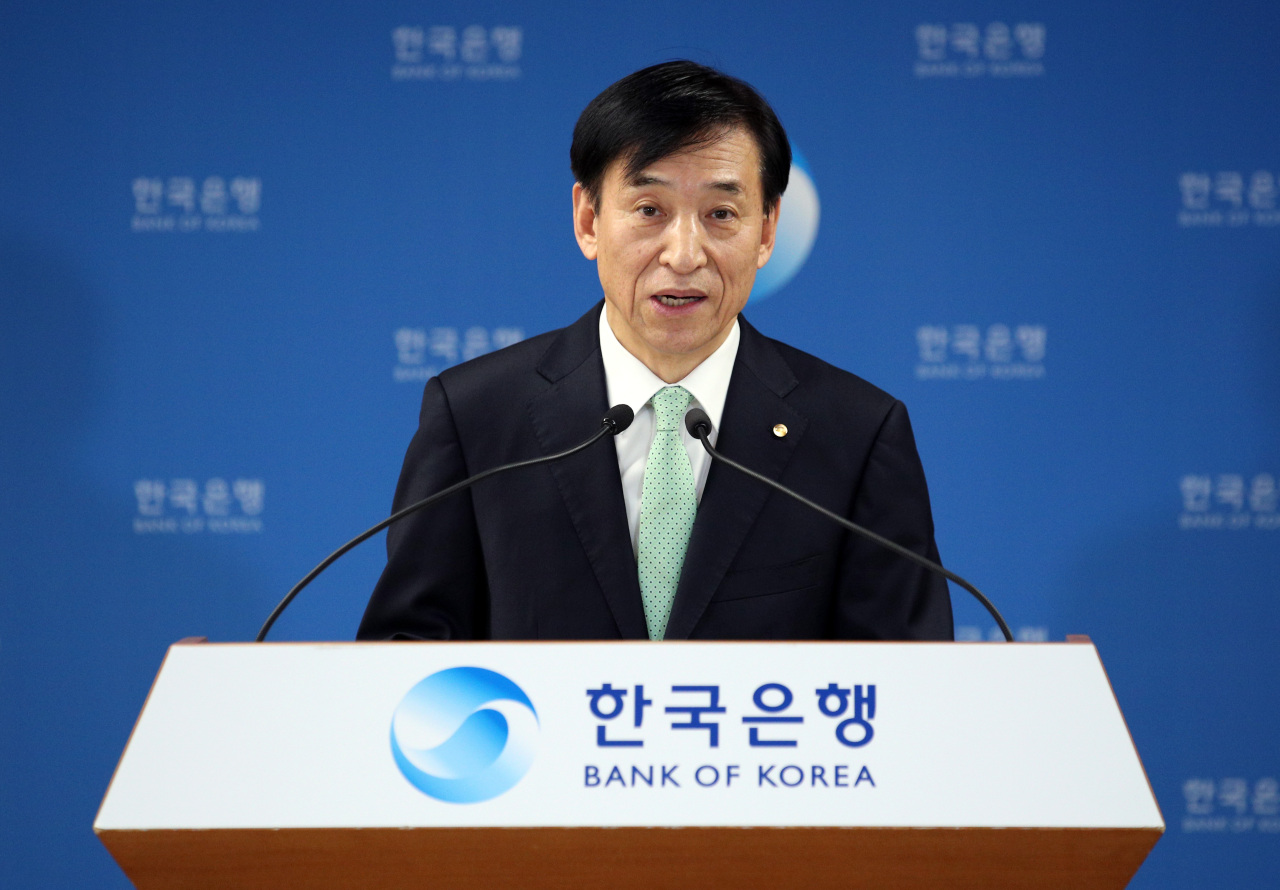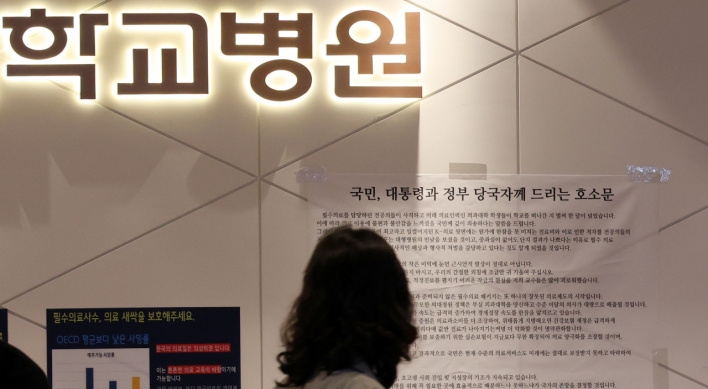BOK freezes rate despite coronavirus, lowers growth outlook
Central bank refrains from drastic easing actions, citing uncertainties
By Bae HyunjungPublished : Feb. 27, 2020 - 16:05

Despite the economic fallout of the new coronavirus, South Korea’s central bank on Thursday froze its policy rate, but chose to cut the growth outlook, reflecting heightened uncertainties.
Instead of taking immediate monetary easing decisions, it decided to focus on microscopic actions such as expanding financial support for affected industries.
The Bank of Korea’s rate-setting Monetary Policy Board held its second meeting for this year and decided to keep the nation’s base interest rate at the current record-low 1.25 percent. Two of the seven board members, classified as dovish, suggested a minority opinion that the rate should be lowered by 25 basis points to an unprecedented 1 percent.
Reflecting the prolonged effect of COVID-19, the BOK slashed the gross domestic product growth estimate for this year to 2.1 percent, down 0.2 percent from its forecast suggested three months earlier.
“COVID-19, which has already delivered negative impacts on the real economy, will have a larger leverage on the economy than major epidemics in the past,” said BOK Gov. Lee Ju-yeol in a press conference.
In consideration of the fast spreading epidemic, the latest press event was streamed live on the BOK’s YouTube channel, with only a limited number of officials and selected media representatives at the scene.
“While most of the fallout is expected during the first quarter, the (nation’s) service industries such as tourism, food, lodging and retail will be the most affected,” Lee said, admitting that Asia’s fourth-largest economy may log negative growth for January-March.
The semiconductor business, which had been anticipating a rebound within the first half of this year, may also take impact, but the BOK chief refrained from jumping to conclusions.
“The production capacities and schedules are not yet affected (by COVID-19) but the recovery time may be put off, should the current circumstances prolong,” he said.
“So far, we do not see reasons to change the figures for the industry’s outlook.”
While ruling out the needs for immediate monetary actions, the policymaker left room for plausible future actions, recognizing the uncertainties.
“The decisions to lower this year’s growth outlook and to freeze the policy rate were both built on the premise that COVID-19 will phase out after peaking in March,” Lee said.
“The future prospect of (Korea’s) economic growth, however, is subject to uncertainties, depending on the development (of the epidemic).”
Speculations had been escalating recently in the domestic financial market that monetary authorities may turn to easing actions amid stalled consumption.
Despite such expectations, however, it is “not yet the right time” to adjust the policy rate, according to the BOK chief.
“Microeconomic measures to provide support to affected industries, such as the service sector, are more necessary than a monetary policy change at this point in time,” Lee said.
“The recent slowdown in consumption is mostly due to the rising level of uncertainties, rather than (fundamental) economic factors.”
To such effect, the BOK board approved of an emergency action to increase the ceiling of financial support by an additional 5 trillion won ($4.1 billion) to a total of 30 trillion won.
The monetary policymaker also underlined the need to maintain the country’s financial stability, in light of the high level of household debts and housing prices.
“Financial stability should be approached in multiple perspectives and may not be solved through a rate change approach alone,” he said, citing the persisting volatility of the domestic real estate market.
“The government has come up with comprehensive real estate measures, which apparently have had the (intended) effect in Seoul, but some suburban areas are still seeing (housing) price fluctuations.”
Korea’s household debt reached a record high of over 1,600 trillion won, as of the end of last year, BOK data showed earlier.
By Bae Hyun-jung (tellme@heraldcorp.com)



![[Herald Interview] 'Amid aging population, Korea to invite more young professionals from overseas'](http://res.heraldm.com/phpwas/restmb_idxmake.php?idx=644&simg=/content/image/2024/04/24/20240424050844_0.jpg&u=20240424200058)














